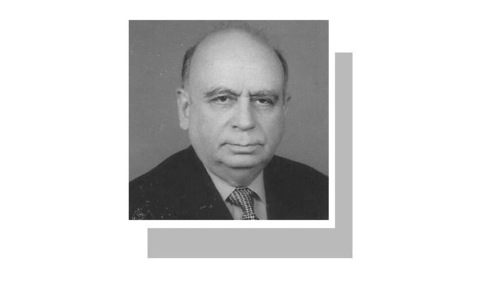
THE brief Eid truce that witnessed some emotional scenes of Afghan troops and Afghan Taliban fighters embracing each other may have tremendous symbolic value. Yet, the possibility that the peace process, aimed at ending the war in Afghanistan, will get off the ground remains elusive. The Taliban have rejected President Ashraf Ghani’s offer to extend the ceasefire and announced they would resume hostilities. The intensification of violence could minimise the optimism generated by the truce.
It was indeed a momentous event in the 17-year-long war when some 30,000 Taliban fighters, many of them carrying weapons, joined Eid prayers and mingled openly with government soldiers in various cities of Afghanistan. The festivities and the joyous mood were illustrative of the public sentiment and support for peace and reconciliation.
Not a single bullet was fired during the ceasefire that also proved that the Taliban are fully united under a central command notwithstanding reports of division within their ranks. Yet the flooding of fighters into the cities and their bonhomie with government officials during Eid has caused serious concern to the leadership. They were particularly disturbed by fighters attending the reception given by senior government officials in Jalalabad and Kabul.
The sight of insurgents flooding the streets of Kabul must have caused concern to Kabul and the Taliban.
Most of the fighters are believed not to have seen life in town for a long time and were baffled by it. Although almost all fighters reportedly returned to their posts before the end of the ceasefire some have stayed back. All that seems to have worried the insurgent leadership and has brought to the surface the fissures within. In a purported video message posted on social media, Mullah Yakub, the son of Mullah Omar castigated the Taliban commanders for being overly friendly with government officials.
A major concern of some Taliban leaders is that the ceasefire and the close interaction with government forces could have affected the morale of the fighters. The ceasefire had come amidst a major Taliban offensive that helped the insurgent force expand its influence. Since the start of the summer offensive, the Taliban have overrun several districts not only in central and western Afghanistan but also in the north.
According to some reports, Taliban forces have been effectively active in 70 per cent of the war-torn country despite massive aerial bombing by the US forces that often causes civilian casualties. Days before the ceasefire, the insurgents had launched a series of lethal attacks on military targets killing dozens of Afghan army soldiers and police officers. According to some analysts, the three-day truce may result in loss of momentum for the Taliban offensive. But it is as yet not clear whether the Afghan and American forces can take advantage of that.
For the Afghan government, the sight of thousands of insurgent fighters flooding the streets of the capital Kabul and other towns and being enthusiastically greeted by the people would not have been a happy one either. Some Afghan leaders have expressed their scepticism whether it was a wise decision to open the gates of the cities to the insurgents. There is also fear that the fighters who have stayed back could be potential attackers.
Not surprisingly, the Taliban fighters did not enter the non-Pakhtun districts in northern Afghanistan during the ceasefire, despite their significant military successes in the region in recent months, for the simple reason that there was no expectation of the same kind of public response as witnessed in the Pakhtun-dominated areas. That may be reflective of the reservations of the Afghan ruling elite regarding President Ghani’s peace gesture towards the insurgents.
Meanwhile, the two bloody attacks carried out by the militant Islamic State group that killed scores of people including Taliban elements during the ceasefire also underline the growing complexities of the Afghan crisis. The bloodbath was meant to sabotage any move towards peace. The growing activities of the Middle East-based militant group have given a new and bloodier turn to the Afghan war. It is certainly cause for concern for both the government in Kabul and the Afghan Taliban. The expanding role of IS has increased pressure on the two sides to counter the militant group that espouses a global terrorist agenda. Most of the recent and deadlier attacks causing civilian casualties have been carried out by IS.
There have certainly been more positive signals coming from Kabul and Washington following the encouraging public response to the armistice. Beside the unilateral extension of the ceasefire, the Afghan president in a statement declared that the Kabul government was prepared to discuss the issue of foreign forces in talks with the Taliban. It goes beyond the offer made by President Ghani earlier this year of releasing Taliban prisoners and talks.
President Ghani’s offer has been backed by US Secretary of State Mike Pompeo who has declared that the Trump administration was prepared to support, facilitate and participate in these discussions. Earlier this month, Gen John Nicholson, the top American commander in Afghanistan claimed that “channels of dialogue” had opened with the Taliban.
While the Taliban are willing to talk to the US, they refuse to enter into any negotiations with the Kabul government. There is no indication yet of the insurgent leaders showing any flexibility in their hard-line position on this matter. In his Eid message, Mullah Haibatullah the supreme leader of the Islamist militia, has reiterated his position of ‘no talks’ with the Kabul government. “If the American officials truly believe in a peaceful end to the Afghan imbroglio then they must directly present themselves at the negotiation table so that this tragedy (invasion) — the destructive effects of which mainly harm the American and Afghan people — can be resolved through talks.”
It is apparent that the Taliban leadership may have demonstrated some flexibility in agreeing to a short ceasefire, perhaps on the persuasion of Pakistan and China, but there is no indication yet of the militia accepting President Ghani’s offer for peace talks. However, the dynamics generated by the Eid ceasefire may have opened a window of opportunity.
The writer is an author and journalist.
zhussain100@yahoo.com
Twitter: @hidhussain
Published in Dawn, June 20th, 2018












































